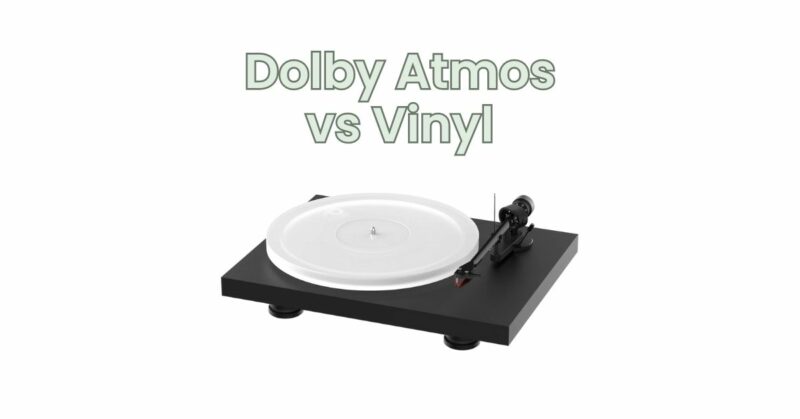In the realm of audio technology, two distinct formats have captivated music enthusiasts and audiophiles: Dolby Atmos and vinyl. Dolby Atmos is a cutting-edge audio format that offers immersive and three-dimensional sound experiences, while vinyl records, with their analog charm, have enjoyed a resurgence in popularity. In this article, we delve into the differences and strengths of Dolby Atmos and vinyl, exploring the immersive qualities they bring to the table and helping you decide which format best suits your audio preferences and setup.
Dolby Atmos: Immersive Audio Revolution Dolby Atmos is a groundbreaking audio format that adds a new dimension to sound reproduction. Here are some key advantages of Dolby Atmos:
- Immersive 3D Sound: Dolby Atmos creates a multidimensional soundstage by incorporating height channels in addition to traditional surround channels. This allows sound objects to be precisely placed and moved in a three-dimensional space, enveloping the listener in a truly immersive audio experience.
- Precise Sound Placement: Dolby Atmos utilizes object-based audio technology, enabling sound engineers to precisely position and move individual audio elements within a three-dimensional space. This precision enhances the localization and separation of sounds, resulting in a more accurate and realistic listening experience.
- Compatibility and Accessibility: Dolby Atmos is compatible with a wide range of audio systems, including home theater setups, soundbars, and even headphones. It is also supported by various streaming services, Blu-ray discs, and gaming platforms, making immersive audio content readily accessible to a broader audience.
Vinyl: Analog Warmth and Fidelity Vinyl records have long been celebrated for their distinct audio characteristics. Here are some advantages of vinyl:
- Analog Sound: Vinyl records offer a warm and organic sound quality that is highly sought after by audiophiles. The analog nature of vinyl provides a unique sonic texture, capturing subtle nuances and conveying a sense of depth and warmth that can be perceived as more natural and authentic.
- High Fidelity: Vinyl records, when properly mastered and played on high-quality equipment, can deliver exceptional sound fidelity. The wide frequency range and dynamic capabilities of vinyl can offer a rich and detailed listening experience, particularly for those who appreciate the nuances of analog audio.
- Tangible and Collectible Experience: Vinyl records provide a tangible and interactive experience. Flipping through album covers, examining artwork, and delicately placing the needle on the record can evoke a sense of nostalgia and engagement with the music. Vinyl records are also highly collectible, with limited editions and unique pressings adding to their allure.
Considerations and Personal Preference: When comparing Dolby Atmos and vinyl, several factors come into play:
- Immersive vs. Analog Charm: Dolby Atmos offers a highly immersive and three-dimensional sound experience, placing the listener at the center of the action. Vinyl, on the other hand, provides a distinct analog warmth and charm that resonates with those who appreciate the organic nature of analog sound reproduction.
- System Requirements vs. Equipment Compatibility: Dolby Atmos requires specific audio equipment, including overhead speakers or soundbars with upward-firing drivers, to fully experience its immersive capabilities. Vinyl can be enjoyed on various turntables and amplifiers, though quality equipment is recommended for optimal sound reproduction.
- Accessibility vs. Collectibility: Dolby Atmos content is readily accessible through compatible platforms and services. Vinyl records, while requiring physical storage space, offer a collectible and aesthetic appeal that can enhance the overall listening experience.
Conclusion: The choice between Dolby Atmos and vinyl ultimately depends on personal preferences, listening habits, and the desired audio experience. Dolby Atmos provides a cutting-edge immersive audio experience, placing the listener in the midst of the soundstage. Vinyl records, with their analog charm and warm sound, offer a nostalgic and tangible engagement with the music. Both formats have their strengths and considerations, and the decision comes down to individual taste, equipment compatibility, and the desired balance between immersive technology and the inherent qualities of analog audio.

